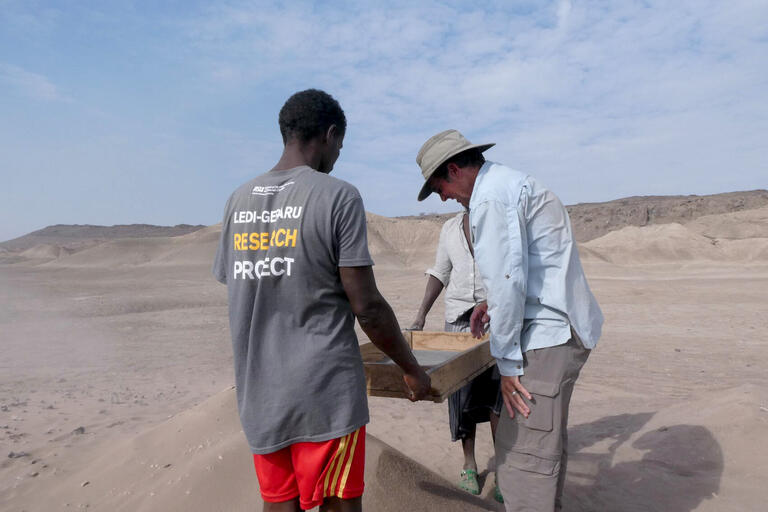Brian Villmoare
Biography
Brian Villmoare's research interests range from broad questions of evolutionary theory to high-resolution studies of the internal structures of the hominin face. His research projects have included studying the role of selection and genetics in evolutionary change and extinction, the specific evolutionary constraints and selection pressures responsible for hominin craniofacial form, determining the homology of unique characters in the hominin cranium, and FEA biomechanical analyses of early hominins.
During his graduate studies, he worked with Charlie Lockwood and Bill Kimbel, focusing on detailed analyses of the craniofacial morphology of early fossil hominins. For his dissertation he developed new geometric morphometric methods for quantifying morphological shape to address questions of systematics and craniofacial integration in the hominins.
Villmoare's fieldwork includes travels Makapansgat, South Africa, and Koobi Fora, Kenya. Since 2002, he has worked in the Afar region of Ethiopia, where he has served as a co-director of the Ledi-Geraru Project with Kaye Reed, Chris Campisano, and Ramone Arrowsmith. The project is funded by the National Science Foundation.
Education
- Ph.D., Anthropology, Arizona State University
- M.A., Anthropology, Arizona State University
- B.A., Philosophy, University of Virginia
Brian Villmoare In The News
Articles Featuring Brian Villmoare
UNLV Newsmakers 2025: August
The top news stories starring university students and staff.

Discovery of New Fossils — and New Species of Ancient Human Ancestor — Reveals Insights on Evolution
UNLV anthropologist and international research team find Ethiopian fossils; details published in Aug. 13 Nature paper.
Study: The Evolutionary Origins of Poor Long-Term Decision Making
New UNLV-led study models thousands of generations to find out why animals – including humans – evolved to prefer short-term gains over more fruitful long-term benefits.

UNLV Newsmakers 2022: August
A roundup of prominent news stories highlighting university pride, research, and community collaboration.


